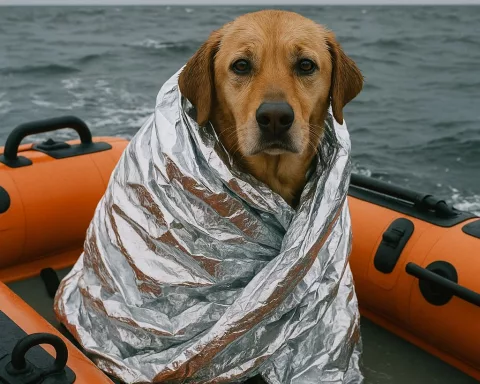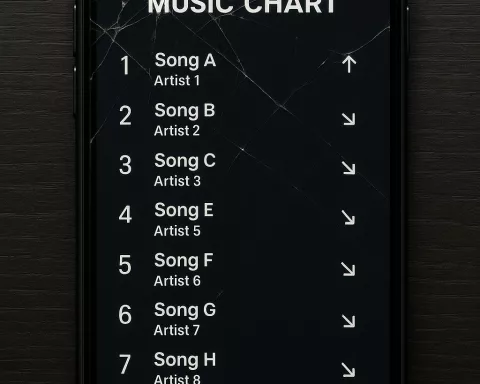Jack was a sad dog who suffered alone, chained up and covered in ticks. Rescued by the Cape of Good Hope SPCA, he received urgent surgery to remove a heavy chain and a painful growth on his neck. As he stepped into freedom for the first time, Jack showed the world his brave spirit and the power of kindness. His journey from pain to hope inspires us all to care for animals and fight against cruelty. Jack’s story reminds us that love and compassion can heal even the deepest wounds.
What happened to Jack, and how was he rescued?
Jack was subjected to severe neglect, found chained and infested with ticks. Rescued by the Cape of Good Hope SPCA, he underwent urgent surgery to remove an embedded chain and a large growth on his neck, marking the beginning of his recovery and hope for a better future.
A Glimpse into Jack’s Torment
Jack’s tale is a stark depiction of both severe neglect and immense resilience. Rescued by the Cape of Good Hope SPCA, his story reveals the darker side of human neglect while also showcasing the transformative power of community compassion. Jack’s rescue and recovery shed light on the critical role organizations like the SPCA play in advocating for the voiceless and neglected animals within our communities.
Jack’s torment came to the attention of SPCA Inspector Werner Taljaard, who was alerted to the dog’s dire situation. The inspector reported a horrendous smell of decay even before encountering Jack. Found in Grassy Park, Jack was chained in such a convoluted manner that he could hardly move. His frail body teemed with ticks, infesting his eyes and ears. The chain’s relentless pressure had caused a grotesque growth the size of a tennis ball on his neck, and sharp cable ties had painfully embedded into his flesh.
Living in deplorable conditions, Jack’s suffering was ignored by the four individuals residing at the property. Their sheer indifference to the overwhelming stench and visible suffering underscored a disturbing level of apathy. This highlights the indispensable work done by organizations like the SPCA, who crusade tirelessly against such cruelty.
The Rescue Mission
Inspector Taljaard quickly secured a warrant from the Wynberg Magistrate’s Court, permitting him to rescue Jack from his appalling conditions. The rescue itself posed significant challenges. The cable ties had entrenched so deeply into Jack’s neck that removal required immediate surgical intervention. Jack was swiftly transported to the SPCA hospital, where the veterinary team braced for the complex procedure ahead.
Sedation provided Jack with his first genuine relief, revealing the full extent of his injuries to the veterinary team. Shaving the area around his neck exposed the grim reality of his condition. The surgery entailed not only removing the embedded chain but also excising the large growth caused by its constant constriction.
SPCA spokesperson Belinda Abraham described the ordeal in vivid detail. The ticks had driven Jack to the brink of madness, compounding his physical suffering. The veterinary team meticulously cleaned and sterilized his wounds, finally removing the chain and the suffocating mass that had tormented him. The chain’s weight, an alarming two kilograms, was lifted from Jack’s exhausted body, marking a significant step in his recovery.
Jack’s First Steps to Freedom
Jack’s initial moments outside the medical ward were tentative. Having known only a confined, painful existence, taking those first steps towards freedom was both daunting and exhilarating. Chief Inspector Jaco Pieterse gently encouraged Jack to explore his newfound liberty. Though hesitant, Jack’s determination, bolstered by the unwavering support of the SPCA team, was evident.
Jack’s rescue marks the beginning of a broader mission to seek justice for animals subjected to similar cruelty. The SPCA’s Inspectorate team is committed not just to saving lives but also to holding perpetrators accountable. They actively participate in events like the 5km Sanlam Cape Town Marathon to raise necessary funds for their courtroom battles, ensuring they can continue to advocate for animals like Jack.
Reflecting on Human-Animal Relationships
Jack’s ordeal mirrors the historical neglect and eventual recognition of animal rights throughout human history. From ancient times to modern society, the treatment of animals often reflects societal values. During the Industrial Revolution, the utilitarian exploitation of animals led to widespread suffering but also spurred the early animal rights movement as awareness of the moral implications of such treatment grew.
In today’s world, Jack’s story serves as a poignant reminder of our past failures and our potential for redemption. Art and literature frequently depict animals as both victims and symbols of resilience. These creative expressions highlight the duality of human-animal relationships, underscoring the need for compassion and respect.
Scientific advancements have further deepened our understanding of animal sentience and their complex emotional lives. This growing body of knowledge reinforces the moral imperative to treat animals humanely. Organizations like the SPCA, combining scientific expertise with unwavering advocacy, play a crucial role in this ongoing effort.
Towards a Compassionate Future
Jack’s recovery, though ongoing, symbolizes hope and the possibility of a more compassionate society. His first steps towards freedom represent broader societal efforts to address and prevent animal cruelty. The dedication of the SPCA team, community support, and the legal framework that enabled his rescue all highlight the multifaceted approach needed to combat such inhumanity effectively.
Jack’s story resonates on multiple levels, illustrating the immediate impact of direct intervention, the necessity of legal action, and the broader societal shift towards recognizing and rectifying animal suffering. His journey from unimaginable pain to hope and healing stands as a powerful testament to the enduring strength of the human-animal bond and the collective effort required to uphold it.
In conclusion, Jack’s story is not just about one dog’s suffering and recovery; it is a broader narrative about human compassion, legal advocacy, and societal progress towards a more humane treatment of animals. The SPCA’s relentless efforts and the community’s support provide a blueprint for how we can collectively combat animal cruelty and foster a more compassionate world for all living beings.
“`markdown
Frequently Asked Questions (FAQ)
What happened to Jack, and how was he rescued?
Jack was found chained up in Grassy Park, suffering from severe neglect and infested with ticks. He was rescued by the Cape of Good Hope SPCA after their Inspector Werner Taljaard was alerted to his dire situation. Jack underwent urgent surgery to remove an embedded chain and a painful growth on his neck, marking the beginning of his journey toward recovery.
What kind of injuries did Jack sustain before his rescue?
Jack endured significant injuries due to the heavy chain embedded in his neck, which caused a grotesque growth and inflicted deep wounds. He was also severely infested with ticks, which compounded his physical suffering and caused immense distress. His condition was a stark representation of neglect and cruelty.
How did the SPCA conduct Jack’s rescue?
The rescue involved securing a warrant from the Wynberg Magistrate’s Court to legally remove Jack from his appalling conditions. Inspector Taljaard and the veterinary team faced challenges in safely removing the deeply embedded cable ties and chain, which required immediate surgical intervention to alleviate Jack’s suffering.
What was Jack’s experience like after his rescue?
After his rescue, Jack experienced his first moments of freedom, which were tentative yet filled with hope. Encouraged by the SPCA team, he began to explore his new surroundings, illustrating his resilience and the transformative power of kindness and care.
How does Jack’s story highlight the need for animal rights advocacy?
Jack’s ordeal brings attention to the critical work of organizations like the SPCA in fighting against animal cruelty. It emphasizes the importance of community awareness, legal action, and continuous efforts to hold perpetrators accountable, ensuring that no animal suffers in silence.
What can individuals do to help prevent animal cruelty like what Jack experienced?
Individuals can contribute by supporting local animal welfare organizations, advocating for animal rights, and raising awareness about the importance of humane treatment of animals. Participating in events, volunteering, and donating to causes like the SPCA are effective ways to make a difference in the lives of neglected animals.
“`












